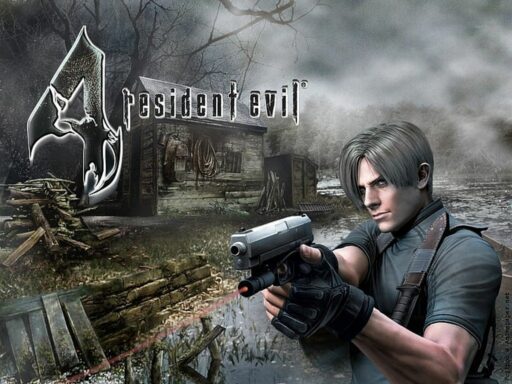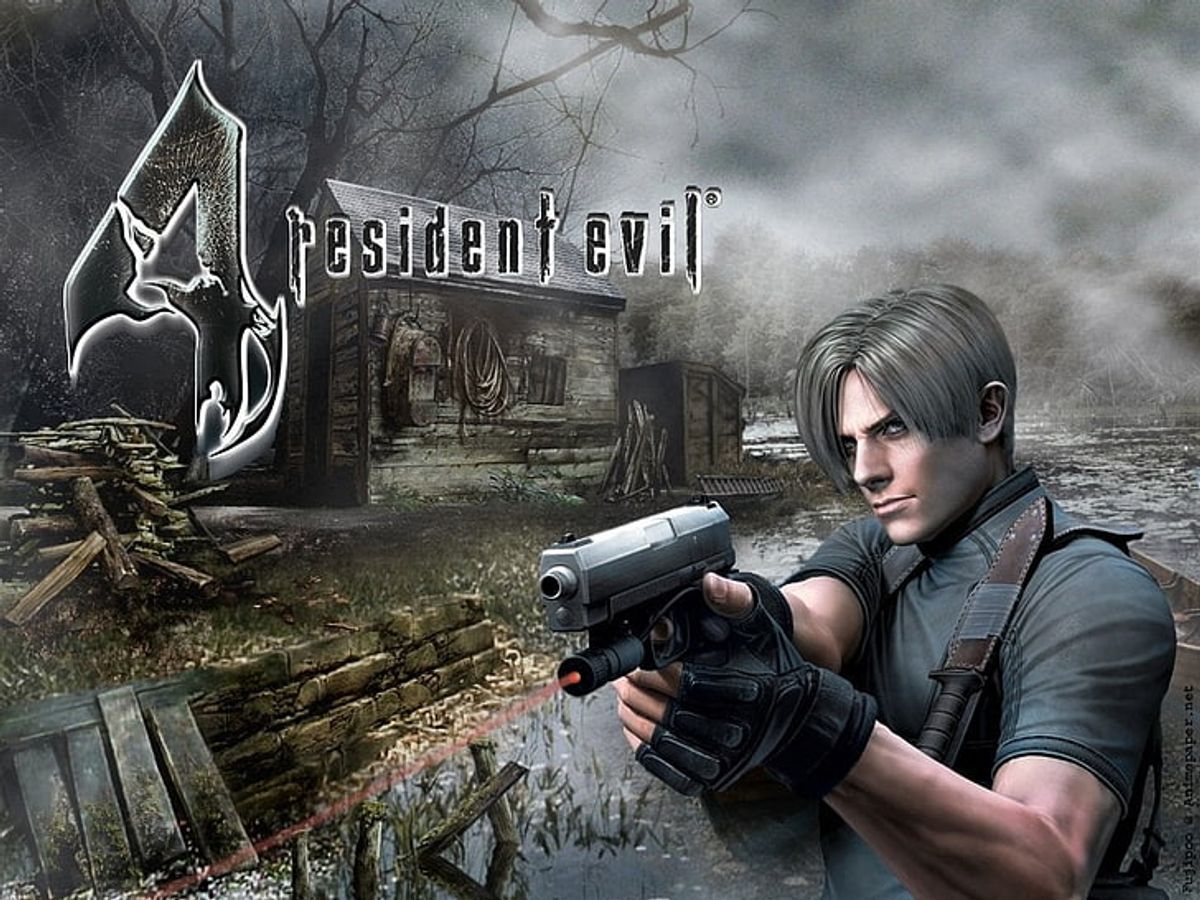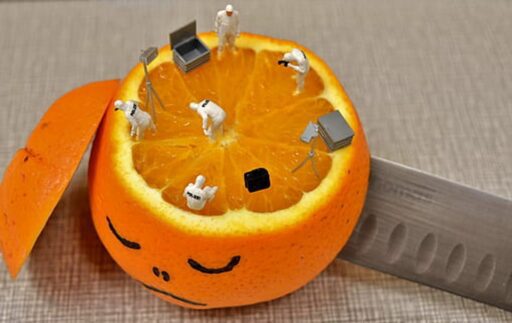The ‘Resident Evil’ movie series, born from the iconic video game franchise, has carved a niche in the horror genre with its unique blend of action, dystopian themes, and nightmarish creatures. As we delve into the dark corridors of this cinematic universe, we explore the evolution of its style, the depth of its characters, and the impact it has had on audiences and the horror genre at large. From the eerie silence of a desolate mansion to the explosive battles against the undead, the ‘Resident Evil’ movies offer a fascinating case study in the translation of video game horror to the big screen.
Key Takeaways
- The ‘Resident Evil’ films successfully transitioned from a video game series to a cinematic franchise, creating a unique horror experience that blends science fiction with survival horror elements.
- Milla Jovovich’s portrayal of Alice has become iconic in the action-horror genre, with the character’s evolution central to the overarching narrative of the film series.
- Despite mixed critical reviews, the ‘Resident Evil’ movies have cultivated a dedicated fan base and have performed consistently well at the box office, showcasing their appeal to a broad audience.
- The franchise’s use of special effects, makeup, and meticulously choreographed action sequences has set a standard for horror-action movies and has been influential in the genre.
- The cultural impact of the ‘Resident Evil’ movies extends beyond the big screen, influencing horror and pop culture, as well as spawning merchandise, expanded universe content, and discussions of future reboots and spin-offs.
The Birth of a Franchise: Resident Evil’s Cinematic Journey

From Game to Screen: The Adaptation Process
The transition of Resident Evil from a beloved video game series to a cinematic franchise is a tale of creative adaptation and bold storytelling choices. The challenge was to preserve the essence of the games while crafting a narrative that would appeal to a broader audience.
The adaptation process involved several key steps:
- Understanding the core elements that made the games successful
- Expanding the Resident Evil universe to fit the cinematic format
- Balancing fan expectations with the need for original storytelling
The essence of Resident Evil’s horror was translated to the big screen through a careful blend of character development, plot twists, and the iconic, claustrophobic atmosphere that fans had come to love.
The result was a series that not only captivated gamers but also introduced new fans to the spine-chilling world of Resident Evil. The movies carved out their own niche, becoming a unique entity separate from, yet deeply rooted in, the video game lore.
The Evolution of Style and Horror Elements
As the Resident Evil movies progressed, the franchise experienced a significant evolution in both style and the portrayal of horror elements. The initial films leaned heavily into the survival horror roots of the video game series, with a strong emphasis on tension and fear. However, as the series continued, there was a noticeable shift towards more action-oriented sequences, while still maintaining horror as a core component.
The visual aesthetic also transformed, with the later movies incorporating more advanced CGI and special effects to create increasingly grotesque and nightmarish creatures. This evolution can be seen as a reflection of the changing tastes of audiences and advancements in filmmaking technology.
- Early films: Claustrophobic settings, limited technology
- Middle films: Transition with mixed elements of horror and action
- Later films: High-octane action, advanced CGI monsters
The balance between horror and action has always been a delicate dance for the Resident Evil franchise. The series has had to constantly adapt to keep viewers on the edge of their seats, while also delivering the explosive action sequences that fans have come to expect.
Key Players: The Minds Behind the Monsters
The Resident Evil movie franchise owes its spine-chilling creatures and apocalyptic scenarios to a group of visionary filmmakers and artists. At the forefront is director Paul W.S. Anderson, who not only directed multiple entries but also wrote and produced, shaping the series’ direction. His unique vision melded horror and action, creating a distinct cinematic experience.
The creative team’s efforts are complemented by the talents of makeup and special effects maestros. Their dedication to crafting the grotesque and terrifying monsters of Resident Evil is evident in every frame. The series’ special effects supervisors and makeup department heads have pushed the boundaries of practical and CGI effects to bring the undead to life.
The synergy between storytelling and technical artistry has been pivotal in delivering the horror of Resident Evil to the silver screen.
The table below highlights the key creative figures across the franchise’s installments:
| Movie Title | Director | Lead Makeup/SFX Artist |
|---|---|---|
| Resident Evil (2002) | Paul W.S. Anderson | Paul Jones |
| Resident Evil: Apocalypse (2004) | Alexander Witt | Paul Jones |
| Resident Evil: Extinction (2007) | Russell Mulcahy | Paul Jones |
| Resident Evil: Afterlife (2010) | Paul W.S. Anderson | Paul Jones |
| Resident Evil: Retribution (2012) | Paul W.S. Anderson | Paul Jones |
| Resident Evil: The Final Chapter (2016) | Paul W.S. Anderson | Paul Jones |
Each of these individuals has contributed to the lasting legacy of the Resident Evil movies, ensuring that the horror they depict is not easily forgotten.
Unraveling the T-Virus: Plotlines and Character Arcs

The Umbrella Corporation Conspiracy
At the heart of the Resident Evil movie saga lies the sinister Umbrella Corporation, a pharmaceutical giant with a dark secret. The company’s quest for profit leads to the development of the T-Virus, a bioweapon capable of reanimating the dead and creating monstrous mutations.
The conspiracy unfolds as the films progress, revealing the corporation’s global influence and its disregard for human life. The following points outline the key aspects of the Umbrella Corporation’s nefarious activities:
- Creation and control of the T-Virus
- Covert operations and cover-ups
- Experimentation on unsuspecting populations
- Power struggles within the organization
The Umbrella Corporation’s actions set the stage for a dystopian nightmare, where the line between human and monster is blurred, and survival becomes the ultimate challenge.
Alice’s Odyssey: Milla Jovovich’s Iconic Role
Milla Jovovich’s portrayal of Alice has become synonymous with the Resident Evil movie franchise. Her character’s journey from a security operative suffering from amnesia to a superhuman warrior is the backbone of the series. Alice’s evolution mirrors the franchise’s growth, from a contained outbreak story to a global post-apocalyptic battle against the undead and the nefarious Umbrella Corporation.
- Resident Evil (2002): Alice awakens with no memory, quickly becoming entangled in the Hive’s outbreak.
- Resident Evil: Apocalypse (2004): Alice begins to discover the extent of her abilities while facing the virus-ravaged Raccoon City.
- Resident Evil: Extinction (2007): Now fully aware of her powers, Alice roams the desert wastelands, searching for survivors.
- Resident Evil: Afterlife (2010): Alice takes the fight directly to the Umbrella Corporation, revealing layers of conspiracy.
- Resident Evil: Retribution (2012): Captured by Umbrella, Alice fights through simulations of various outbreak scenarios.
- Resident Evil: The Final Chapter (2016): Alice returns to where it all began, uncovering final truths and engaging in a last stand against Umbrella.
The character of Alice does not exist in the video games, making her unique to the cinematic universe. Her story arc is a testament to Jovovich’s ability to captivate audiences and carry a blockbuster franchise across six films.
Jovovich’s commitment to the role, including performing many of her own stunts, has earned her praise and solidified her status as a modern action heroine. The Resident Evil movies, while diverging significantly from their source material, have created a new narrative that has both complemented and expanded the lore of the games.
Supporting Cast: Heroes and Villains
The Resident Evil movies are populated with a diverse array of characters, each bringing their own unique contributions to the harrowing narrative. The supporting cast serves as the backbone of the story, often providing critical assistance or formidable opposition to the protagonist, Alice.
- Jill Valentine, a former police officer, is known for her combat skills and strategic thinking.
- Carlos Oliveira offers a mix of muscle and heart, often acting as Alice’s ally in battle.
- Claire Redfield stands out with her leadership qualities and survival instincts.
- Albert Wesker, the series’ main antagonist, exudes a chilling presence with his superhuman abilities and cold ambition.
The dynamics between these characters create a rich tapestry that enhances the overarching plot. Their individual journeys and interactions with Alice add depth to the films and provide fans with characters to root for—or against.
The interplay of heroes and villains in the Resident Evil series is not just about the conflict; it’s about the contrasting human elements they bring to a world overrun by the undead.
The Scares on Screen: Analyzing the Horror and Action Sequences

Crafting the Nightmares: Special Effects and Makeup
The Resident Evil movies are renowned for their visceral special effects and makeup that bring the horror of the T-Virus to life. The transformation of humans into grotesque bio-organic weapons is a central visual theme that has evolved with the series. The makeup and prosthetics used to create these effects have been pivotal in delivering the spine-chilling experience fans expect.
- Practical effects were used extensively to create the zombies and monsters.
- CGI enhancements were applied to add depth and detail to the creatures.
- Makeup artists spent hours on each character to achieve the desired level of horror.
The dedication to practical effects, combined with strategic use of CGI, ensures that the terror feels as real as possible to the audience.
The balance between practical and digital effects is a testament to the filmmakers’ commitment to authenticity. This blend has allowed for some of the most memorable and horrifying scenes in modern horror cinema.
Set Pieces: Iconic Locations and Their Impact
The Resident Evil movies are renowned for their memorable set pieces that have left a lasting impression on audiences. The Spencer Mansion, the Hive, and the desolate streets of Raccoon City are more than mere backdrops; they are characters in their own right, shaping the narrative and the horror experience.
- The Spencer Mansion: The origin of the nightmare, where it all began.
- The Hive: An underground lab with a chilling secret, the birthplace of the T-Virus.
- Raccoon City: Once bustling, now a ghost town echoing with the moans of the undead.
Each location is meticulously crafted to enhance the sense of dread and claustrophobia, crucial for the survival horror genre. The impact of these iconic locations extends beyond their visual appeal, as they play a pivotal role in the storytelling and the development of the series’ lore.
The interplay between the characters and their environments is a dance of tension and terror, where every corner turned could unveil a new horror.
The legacy of these set pieces is evident in the way they’ve been etched into the minds of fans, often serving as a benchmark for horror settings in other media. Their influence is a testament to the franchise’s ability to create worlds that are both terrifying and unforgettable.
The Choreography of Chaos: Stunts and Fight Scenes
The Resident Evil movies are as much about the adrenaline-pumping action as they are about the horror. The choreography of the fight scenes and stunts is a spectacle of precision and intensity, often overshadowing the scares with their sheer physicality. The stunt teams, alongside the actors, undergo rigorous training to bring the most authentic and heart-stopping sequences to the screen.
The execution of stunts in the Resident Evil franchise is a dance with danger, where every move is calculated to deliver maximum impact without compromising safety.
The complexity of these sequences can be broken down into several key components:
- Preparation: Months of training and rehearsals to perfect every move.
- Safety: Ensuring the well-being of the cast and crew with stringent protocols.
- Innovation: Utilizing cutting-edge technology and techniques to enhance realism.
- Collaboration: A tight-knit effort between directors, stunt coordinators, and performers.
While the stunts and fight scenes are a defining feature of the franchise, they also serve a narrative purpose, often reflecting the characters’ growth and the escalating tension of their journey.
Critics and Crowds: Reception and Box Office Performance

Critical Reviews: The Good, The Bad, and The Ugly
The Resident Evil movies have always polarized critics, with reviews ranging from high praise for their entertainment value to scathing critiques of their divergence from the source material. The consensus often highlights the series’ commitment to its action-packed roots, while questioning its narrative coherence.
- The Good: Critics have lauded the franchise for its relentless pace and imaginative action sequences that keep audiences on the edge of their seats.
- The Bad: Detractors point out the weak character development and plot inconsistencies that plague the series.
- The Ugly: Some reviews harshly criticize the movies for lacking the subtlety and psychological horror that defined the original video games.
The franchise’s ability to consistently draw in viewers despite the critical divide is a testament to its enduring appeal.
The table below summarizes the critical reception of each film in the franchise:
| Movie Title | Rotten Tomatoes Score | Metacritic Score | Notable Positive Review | Notable Negative Review |
|---|---|---|---|---|
| Resident Evil (2002) | 35% | 33 | "A thrilling ride." | "Strays too far from the game." |
| Resident Evil: Apocalypse (2004) | 20% | 35 | "Expands the universe." | "Lacks depth." |
| Resident Evil: Extinction (2007) | 23% | 41 | "Visually striking." | "Narratively weak." |
| Resident Evil: Afterlife (2010) | 23% | 37 | "Impressive 3D effects." | "Forgettable story." |
| Resident Evil: Retribution (2012) | 29% | 39 | "Non-stop action." | "Overly convoluted." |
| Resident Evil: The Final Chapter (2016) | 37% | 49 | "A fitting end." | "Unsatisfying conclusion." |
Fan Reactions: Cult Following and Community
The Resident Evil movie series has garnered a dedicated fan base, with communities forming online and offline to celebrate and critique the films. The fervor of the fans is evident in the numerous fan-made projects and discussions that permeate forums and social media platforms.
- Cosplay events and conventions often feature elaborate costumes from the series.
- Fan theories and debates about the plot’s intricacies are a staple of the community.
- The series’ influence has led to fan fiction and fan art, expanding the universe beyond the films.
The passion of the Resident Evil community is a testament to the franchise’s ability to engage and inspire viewers, creating a rich tapestry of shared experiences and creative expression.
While some fans remain critical of the deviations from the source material, the overall enthusiasm for the Resident Evil movies continues to thrive, with anticipation for future installments and spin-offs always high.
Financial Figures: Analyzing the Franchise’s Success
The Resident Evil movie series has proven to be a financial juggernaut, consistently pulling in impressive numbers at the box office. The franchise’s ability to draw audiences worldwide is a testament to its broad appeal and the enduring popularity of the horror genre.
| Movie Title | Global Box Office (USD) |
|---|---|
| Resident Evil (2002) | $102 million |
| Resident Evil: Apocalypse (2004) | $129 million |
| Resident Evil: Extinction (2007) | $147 million |
| Resident Evil: Afterlife (2010) | $296 million |
| Resident Evil: Retribution (2012) | $240 million |
| Resident Evil: The Final Chapter (2016) | $312 million |
Despite varying critical receptions, the films have shown a remarkable consistency in profitability, with later installments even showing a significant increase in international earnings. This upward trend is particularly notable in markets such as China, where ‘Resident Evil: The Final Chapter’ grossed over $160 million.
The sustained financial success of the Resident Evil movies underscores the franchise’s ability to evolve with audience expectations while staying true to its core elements of suspense and survival horror.
Beyond the Big Screen: Resident Evil’s Cultural Impact

Merchandising and Expanded Universe
The Resident Evil franchise extends far beyond the confines of the cinema, permeating various facets of pop culture with an extensive range of merchandise and an expanded universe. Action figures, apparel, and collectibles have become coveted items among fans, fueling the series’ longevity and profitability.
The expanded universe includes a plethora of novels, comic books, and animated features that delve deeper into the Resident Evil lore. These narratives explore untold stories, offering fans additional content to consume and discuss:
- Novels that expand on the series’ mythology
- Comic books featuring fan-favorite characters
- Animated films that bridge gaps between movie installments
The symbiotic relationship between the merchandise and the expanded universe has not only sustained fan interest but has also introduced new audiences to the Resident Evil world, ensuring the franchise’s continued relevance in the horror genre.
Influence on Horror and Pop Culture
The Resident Evil movie franchise has left an indelible mark on the horror genre and popular culture at large. Its unique blend of survival horror, action, and science fiction has inspired a myriad of films and television shows, pushing the boundaries of horror storytelling.
The visual and thematic elements introduced by Resident Evil have become staples in horror media. From the claustrophobic corridors of the Hive to the desolate streets of Raccoon City, the franchise’s settings have influenced the aesthetic of post-apocalyptic and zombie-infested worlds in subsequent works.
- The use of strong female protagonists has been emulated by many films and series.
- The concept of a global corporation as the antagonist has sparked similar plotlines in other media.
- The blend of horror and action has led to a new subgenre, often referred to as ‘action horror.’
The franchise’s success has demonstrated the commercial viability of horror video game adaptations, encouraging studios to explore similar projects.
Future Endeavors: Spin-offs and Reboots
The Resident Evil saga continues to evolve, with new spin-offs and reboots in development that promise to expand the universe even further. These new projects aim to captivate a new generation of fans while paying homage to the series’ roots.
- The announced television series seeks to explore the darker corners of the Resident Evil world.
- Upcoming movies are rumored to delve into untold stories, potentially featuring fan-favorite characters.
- Video game adaptations and novelizations continue to add depth to the lore, attracting a diverse audience.
The enduring legacy of Resident Evil is a testament to its ability to adapt and reinvent itself, ensuring that the terror—and the franchise—lives on.
Conclusion
The Resident Evil movie series has taken audiences on a harrowing journey through a dystopian world ravaged by a viral apocalypse. With its blend of horror, action, and science fiction, the franchise has carved out a unique niche in the cinematic landscape. While it has deviated from the source material of the video games, it has nonetheless captivated fans with its own lore and iconic characters. As we’ve explored the horrifying world of Resident Evil movies, we’ve seen how they’ve evolved in storytelling, special effects, and character development. Whether you’re a die-hard fan or a newcomer to the series, the Resident Evil movies offer a thrilling escape into a universe where the fight for survival against the undead is as relentless as it is entertaining. As the series continues to expand with new installments, it remains a testament to the enduring appeal of the survival horror genre in film.
Frequently Asked Questions
How faithful are the Resident Evil movies to the video games?
The Resident Evil movies take considerable liberties with the source material, often diverging from the video game plotlines and characters. While they retain the core concept of the T-virus and the zombie outbreak, the films create a unique narrative centered around the character Alice.
Who is Alice in the Resident Evil movie franchise?
Alice, portrayed by Milla Jovovich, is the protagonist of the Resident Evil movies. She is an original character not present in the video games, and her story revolves around her fight against the Umbrella Corporation and the effects of the T-virus.
What are the main themes in the Resident Evil movies?
The main themes of the Resident Evil movies include the dangers of corporate greed, the ethics of genetic manipulation, survival in a post-apocalyptic world, and the battle between humanity and bio-engineered monsters.
How many Resident Evil movies are there?
As of my knowledge cutoff in April 2023, there are six movies in the main Resident Evil series, starting with ‘Resident Evil’ (2002) and concluding with ‘Resident Evil: The Final Chapter’ (2016). There is also a reboot film titled ‘Resident Evil: Welcome to Raccoon City’ (2021).
Did the Resident Evil movies receive positive reviews from critics?
The Resident Evil movies generally received mixed to negative reviews from critics, who often criticized the plot and character development. However, the films have been praised for their action sequences, special effects, and Milla Jovovich’s performance.
Will there be more Resident Evil movies in the future?
The potential for more Resident Evil movies exists, given the franchise’s popularity and the trend of reboots and sequels in the film industry. However, specific plans for future movies would depend on the success of the recent reboot and the direction the producers wish to take.





